| |
|
|
Sansepolcro, formerly Borgo Santo Sepolcro, is a town and comune in the province of Arezzo, on the border of the Tuscany and Umbria regions of Italy. Situated on the upper reaches of the Tiber river, the town is the birthplace of the painters Piero della Francesca, Raffaellino del Colle (a pupil of Raphael) and Angiolo Tricca. It was also the birthplace of the Italian mathematician Luca Pacioli.
Sansepolcro still possesses a distinctive Italian character that is hard to find in the large cities to which tourists tend to visit.
Within its sixteenth-century walls, Sansepolcro contains numerous ancient and beautiful buildings that range from palaces, to museums, to churches, to hotels, restaurants, and shops.
The small village founded here around A.D. 1000 was so proud of the bits of the Holy Sepulcher a couple of pilgrims brought back that the town was named Borgo San Sepolcro.
According to tradition, the town was founded by two pilgrims, Arcanus and Aegidius, who brought a stone from the Church of the Holy Sepulchre with them from the Holy Land. They founded an oratory dedicated to Saint Leonardo, on the site of the current Cathedral.
The first historical mentions of Sansepolcro are slightly later, referring to the Benedictine Abbey, the "Badia", around which the walled commune clustered. During the conflicts between Guelfs and Ghibellines, the town's factions were headed by prominent local families, including the Pichi, Bercordati, Graziani and Bacci.[1]
The city was ruled from Citta' di Castello, Milan, then by the Papacy; in 1367 Pope Urban V gave the town and its surrounding contada to Galeotto Malatesta family, whose heirs ruled it until control was assumed by Florence.
During World War II the town was saved from destruction by the efforts of Tony Clarke, a British Royal Horse Artillery officer who halted the Allied artillery attack in order to save Piero della Francesca's fresco Resurrection. [2]
Main sights
The English writer Aldous Huxley described the Resurrection by Piero della Francesca, which is in the Museo Civico, as "the greatest painting in the world". Piero della Francesca was born in Sansepolcro around 1412 and this city hosts four works by the artist in the Civic Museum. The Altarpiece of Mercy, commissioned to Piero by the homonymous company of Sansepolcro in 1445, the Resurrection, a large fresco painted by Piero della Francesca on the central wall of the Audience Hall, the fresco of St. Julian, found in 1954 in the ancient church of St. Augustine, named after Santa Chiara, and finally, the fresco depicting St. Ludovico, from the Palazzo Pretorio.
The museum collection includes other treasures including paintings by Santi di Tito, Raffaellino del Colle and Luca Signorelli.
|
|
|
|
| |
|
Museo Civico
Piero della Francesca in the Civic Museum of Sansepolcro
The museum is housed within the old palace, which was the seat of the municipality until the 1960s. The present building is the result of a series of architectural modifications begun by Galeotto Malatesta, lord of Rimini, whose family ruled Sansepolcro in the 14th century. In 1850 several works were gathered in the palace from the surrounding area and in 1892 the polyptych painted by Piero della Francesca was transferred there from the chapel of the Misericordia Hospital. The highlight of the museum is the room where Piero created the Resurrection, emblem and symbol of the city. Painted in 1463 for another room in this palace and moved here in 1480, this work made Piero's modern reputation -- art historians began paying attention to it and Piero in general after 1925, when Aldous Huxley dubbed it the "best picture in the world."
As well as those dedicated to Piero della Francesca, the Museum has 15 other rooms that can be visited, with works ranging from the 14th to the 20th centuries, as well as the treasure of the cathedral and an archaeological section in the basement rooms.
|
Piero della Francesca | Resurrection of Christ
|
|
Piero della Francesca, The Resurrection, Museo Civico of Sansepolcro
|
|
The Resurrection is a fresco by the Italian Renaissance master Piero della Francesca, painted around 1463-65. Though documentation is lacking, the gothic Residenza, the communal meeting hall in which it was painted, was returned by Florentine authorities to the citizens of Sansepolcro, Tuscany, 1 February 1459, as a sign of the restoration of some measure of autonomy to the Borgo;[1] today the civic structure houses the Museo Civico of Sansepolcro, the artist's hometown. Now[2] placed high on the interior wall facing the entrance, the fresco has for its subject an allusion to the name of the city (meaning "Holy Sepulchre"), derived from the presence of two relics of the Holy Sepulchre carried by two pilgrims in the 9th century. Piero's Christ is also present on the town's Coat of Arms.[3]
Jesus is in the centre of the composition, portrayed in the moment of his resurrection, as suggested by the position of the leg on the parapet of his tomb, which Piero renders as a classical sarcophagus. His stern, impassive figure, depicted in an iconic and abstract fixity (and described by Aldous Huxley as "athletic"), rises over four sleeping soldiers, representing the difference between the human and the divine spheres (or the death, defeated by Christ's light). His figure in the commune's council hall "both protects the judge and purifies the judged" according to Marilyn Lavin.[4] The landscape, immersed in the dawn light, has also a symbolic value: the contrast between the flourishing young trees on the right and the bare mature ones on the left alludes to the renovation of men through the Resurrection's light.
Guard holding the lance is depicted sitting in an anatomically impossible pose, and appears to have no legs. Piero probably left them out not to break the balance of the composition.[5]
According to tradition and by comparison with the woodcut illustrating Vasari's Lives of the Painters, the sleeping soldier in brown armor on Christ's right is a self-portrait of Piero. The contact between the soldier's head and the pole of the banner[6] carried by Christ is supposed to represent his contact with the divinity.
Piero della Francesca | The Resurrection, Museo Civico, Sansepolcro
|
|
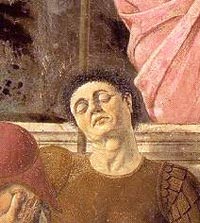 Piero della Francesca, The Resurrection Piero della Francesca, The Resurrection
(self-portrait, detail of fresco), Museo Civico of Sansepolcro
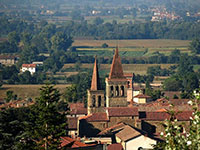
Sansepolcro
|
|
|
|
Piero della Francesca | Polyptych of the Misericordia
|
The Polyptych of the Misericordia, also conserved in the Pinacoteca Comunale of Sansepolcro, is one of the earliest works of the Italian Renaissance painter Piero della Francesca. The central panel is of the common motif of the Virgin of Mercy or Madonna della Misericordia. The Mary of Mercy spreads her cloak around kneeling donors (the one to the left of her, looking up, is believed by some to be a self-portrait by Piero), while a sleepy-eyed St. John the Baptist and other saints look on. The central panel and Saints John and Sebastian are certainly from Piero's brush, as are the Crucifixion above and the Angel and Virgin Annunciate panels flanking it. The rest were probably worked on by assistants or a miniaturist.
In 1445, the Compagnia della Misericordia, a confraternity of Borgo San Sepolcro, commissioned Piero, a native of the town, to paint a polyptych for them. According to the taste of the time, the polyptych was to be painted with precious colours and have a gilded background. Piero did not respect the three-year time limit set in the contract—he was busy working on many other projects. The polyptych was only finished seventeen years later, in 1462.
The oldest two panels, to the left of the main panel, depict St. Sebastian and St. John the Baptist. St. Sebastian's panel shows a close connection with Masaccio's nudes Piero would have seen in an early visit to Florence. Piero painted the outlying panels of the tympanum later; including the Crucifixion at the top centre, St. Benedict, the Angel, the Madonna of the Annunciation, and St. Francis in the sides. Towards 1450 he finished the figures of St. Andrew and St. Bernardino. The predellas, with five scenes of Jesus's life, were mostly executed by assistants.
The last part of the polyptych to be painted was the main central panel showing the Madonna della Misericordia. The panel portrays the mercifully protective gesture of the Madonna enfolding her followers in her mantle.
Piero resolves the difficulty of dealing with a flat solid gilded background, requested by the patrons, by placing the kneeling members of the confraternity (who commissioned the altarpiece) in the realistic three-dimensional space created by the Madonna's mantle, a space resembling the apse of a church. Notably, the Madonna is still portrayed larger in size than the human figures, a tradition in medieval painting. However, the fully three-dimensional rendering of the figure, inspired by Masaccio, and the perspective study, inspired by Brunelleschi, are plainly of the Renaissance.
Piero della Francesca | Polyptych of the Madonna of Misericordia (1445-1462), Sansepolcro
In 1453, Piero della Francesca returned to Sansepolcro where, the following year, he signed a contract for the polyptych in the church of Sant'Agostino. St. Julian is the only fragment that has survived of Piero's fresco decoration of the church of Sant'Agostino in Borgo San Sepolcro.
An absolute, detached, and transcendental figure, in his physical built and striking geometry, the figure identified as San Giuliano is an unmistakable example of the uniqueness of Piero’s mature style.
The fresco portraying St. Julian was discovered in 1954 in the old church of Sant’Agostino, later dedicated to Santa Chiara. The saint, portrayed with a youthful appearance, is wrapped in an elegant red cloak which stands out against the background of antique green imitation marble.
The detached fresco showing St. Louis, originating from the Palazzo Pretorio, shows the saint dressed in a Franciscan habit with a richly decorated bishop’s cope; in the background is a fake niche of precious red and green marble. The fresco has a fundamental civic importance and is an example of Piero’s work in his native town; it is the only fragment left of a more complete, though now lost, work.
|
|
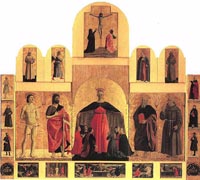
Polyptych of the Madonna of Misericordia (1445-1462), Sansepolcro
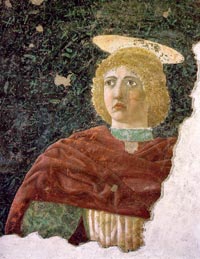
Piero della Francesca, St. Julian, fresco, 1455-60, 130 x 105 cm Pinacoteca Comunale, Sansepolcro
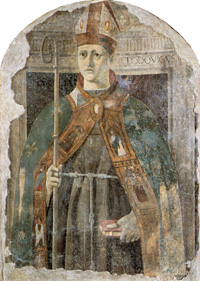 Piero della Francesca, San Ludovico di Tolosa, c. 1460, affresco, 130 x 80 cm, Museo Civico, Sansepolcro Piero della Francesca, San Ludovico di Tolosa, c. 1460, affresco, 130 x 80 cm, Museo Civico, Sansepolcro
|
| |
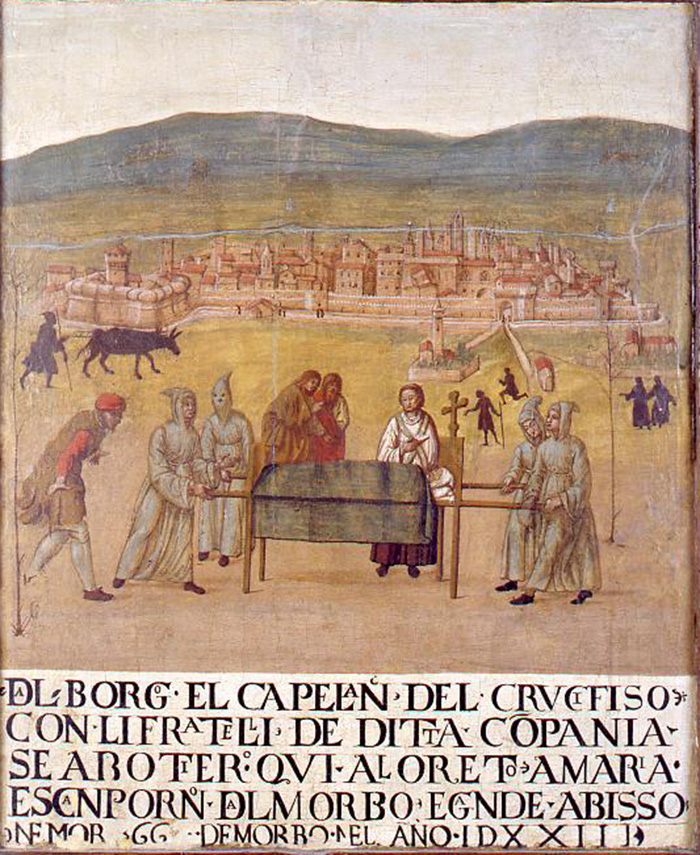 |
| Giovanni del Leone, votive panel of the Compagnia del Crocifisso - Pilgrimage of the Compagnia del Crocifisso in Loreto during the plague of 1523,3, 68 x 57,5 cm, 16th century, panel with view of Sansepolcro, Museo Civico, Sansepolco |
The Sansepolcro Cathedral | Il Duomo
|
The present day cathedral, which was once an abbey church, was built between 1012 and 1049. It was initially dedicated to the Four Evangelists and the Holy Sepulchre, the relics of which, according to legend, were brought from the Holy Land by the pilgrims Egidio and Arcano. It stands approximately where the first Benedictine monastery was founded in the 10th century, which passed to the Camaldolese congregation between the years 1137 and 1187. We also know that the Benedictine abbey was reconstructed in the late 1200s.
In 1520, with the creation of the diocese of Sansepolcro by Pope Leo X, the abbey became the Cathedral of St. John the Evangelist, patron saint of the city and the diocese (there has been a succession of 37 bishops from 1520 to the present day). The territory of Sansepolcro’s new diocese was detached from that of Città di Castello. Later, the Abbey of Santa Maria Assunta in the city of Bagno in the region of Emilia Romagna, along with all of its territory in the Apennines of Cesena, was added to the new diocese.
From 1934 to 1943, under the initiative of Bishop Pompeo Ghezzi, the church underwent radical restoration work along the “purist” line that was in vogue at that time and almost all of the baroque era elements and all of the epigraphs were destroyed. However, the church’s original romanesque-gothic architectural character and the 14th-century and 15th-century frescoes by the School of Rimini and Bartolomeo della Gatta, which had been covered up by renovations done in the 1600s and 1700s, were saved. Moreover, the Chapel of the Holy Sacrament was created and in it was placed the “Holy Face” crucifix that had been above the main altar. Hanging there now is the “Polyptych of the Resurrection” painted by Niccolò di Segna in circa 1348.
The right nave conserves many works of art including: a fresco of the “Madonna and Child” from 1385 by the School of Romagna at the entrance; an “Incredulity of St. Thomas” by Santi di Tito (1576-77) in the first bye-altar; a fresco of the “Crucifixion” from 1486 by Bartolomeo della Gatta; an “Adoration of the Shepherds” by Durante Alberti in the second bye-altar. The bye-altar at the end of the right nave is the only one left in baroque style. Its ceiling opens up into the bell tower where it receives natural light through a small dome decorated with plasterwork and a “Glory of St. Pius V”. Inside the altar hangs a 17th-century painting of the “Madonna della Misericordia” by Raffaello Schiaminossi.
The left nave conserves an “Ascension of Christ” by Pietro Vannucci, known as Perugino, and an early 16th-century sepulchral monument dedicated to Abbot Simone Graziani. The counter façade near the sacristy door bears several 16th-century terracotta low-reliefs by the School of Luca della Robbia. Finally, as mentioned above, the highly venerated “Holy Face”, a 12th-century, wooden polychrome crucifix from the Carolingian age that originated from eastern Europe, is conserved in the left chapel of the presbytery.
|
|
Sansepolcro, Duomo, bell tower[0
]
|
Devoted to St John the Evangelist, the Sansepolcro Cathedral from the start of the 11C has a Romanesque structure on which have been grafted some Gothic elements such as the polygonal chancel. The sober facade has three coffered doors and an alabaster rose window. The square and pointed belfry was reworked in the 14C in the Franciscan way.
The cathedral in Sansepolcro contains a gilded polyptych of the Resurrection (14th century), attributed to Niccolo di Segna. The central figure of Christ stands in a pose so similar to Piero della Francesca's Ressurection in the Museo Civico, that many feel della Francesca must have studied this first.
Niccolo di Segna began his career in the workshop of his father, Segna di Buonaventura.
He followed the style of Duccio with a greater rigidity of the forms. He was also influenced by Simone Martini as seen in the Crucifixion (1345, Pinacoteca Nazionale, Siena) and in the frescoes attributed to him (S. Colomba a Monteriggioni near Siena).
Art in Tuscany | Niccolò di Segna
'In Piero's work the relationship between divinity and humanity is expressed with figurative solutions which are related either to a still Medieval type or portrayal, or to a "modus operandi" open to the new trends. In the central panel of the Polyprych of the Misericordia (see page 19), the figure of the Virgin is much bigger than the figures of the donors beneath her cloak.
This is entirely in keeping with the Medieval model that resolved the divine-human relationship in dimensional terms, as we can see in the two fourteenth century paintings shown here.
In the Resurrection, via Andrea del Castagno and Giotto - obviously - the determining model is Masaccio's Trinity. Here the relationship between divine and human is not resolved in terms of size, but rather by perspective. They can no longer be "framed" the same way. It is of little importance that Piero overturned Masaccio's perspective solutions. In the Resurrection it is the guards who are seen from below and Christ from the front; in the Trinity Christ and the saints are seen from below, and the patron from the front.' [3]
|
|
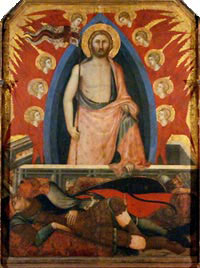 Resurrection
Resurrection by Niccolò di Segna |
|
|
|
Vannucci Pietro di Cristoforo, il Perugino, Ascensione, c. 1510
(from a drawing by Pérugino (1445-1523))
|
|
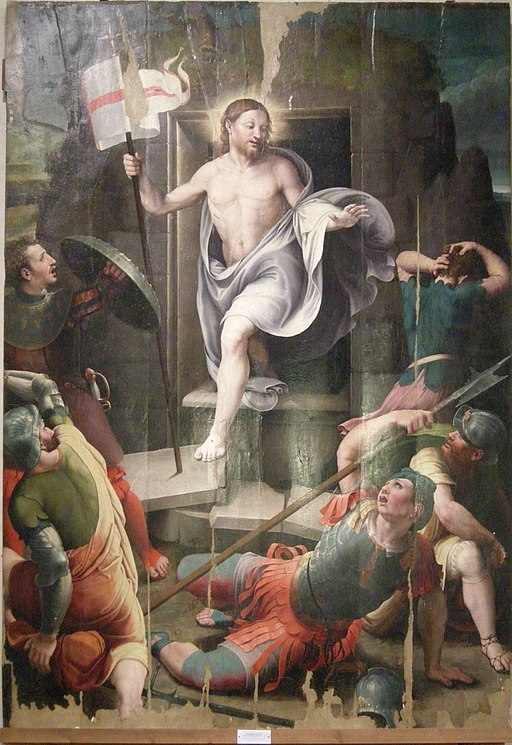 Raffaellino del Colle, Resurrection Raffaellino del Colle, Resurrection |
|
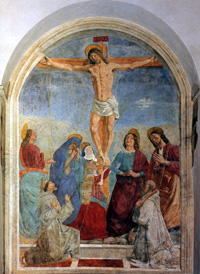
Pietro di Antonio Dei, Bartolomeo della Gatta, Crocifissione, 1486
|
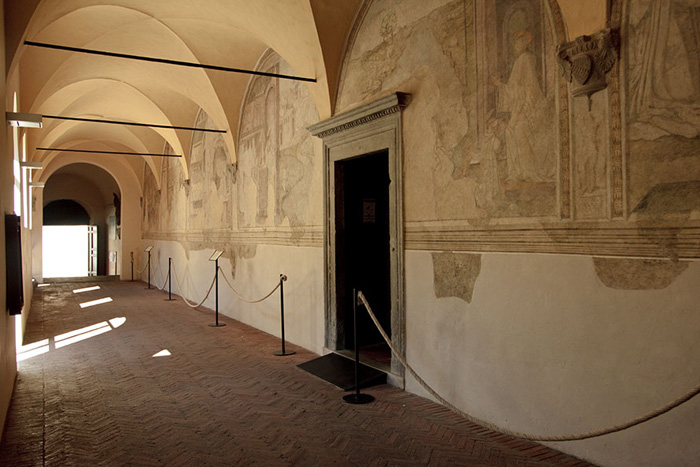
|
Palazzo Vescovile, frescoes depicting the life of St. Benedict
|
Just below the Duomo is Sansepolcro's main square, Piazza Torre di Berta.
The Piazza Torre di Berta is at the heart of the old town and owes its name to a tower that used to stand in the centre until a German shell destroyed it in the last war.
Sansepolcro flourished during the Renaissance, its 26 noble families with their stone towers attached to their elegant palazzi were forced to shorten their towers under the rule of the powerful Medici family. The only tower that was left at its original height was that in the Berta square that alas suffered damage during World War II.
Another tower from the 13C still stands on one side of the square, opposite a palace with windows surrounded by bossage.
After the Loggia della Visitazione [Lodge of the Visitation], we find one of the most famous buildings of Sansepolcro, the Casa di Piero della Francesca, where the artist was born.
It is an elegant building that, it is said, was designed by Piero himself, with an architecture which, for the portal and windows, seems very reminiscent of Michelozzi’s style (1396-1472).
A little further down you can see the Medici Fortress, dating from the 16th century and commissioned by Cosimo I de Medici, with angular bastions and built to a plan by Giuliano da Sangallo (1484-1546), who incorporated the existing fortifications.
Other renowned artists of the same period that came from Sansepolcro include Santi di Tito, Matteo di Giovanni and Raffaellino del Colle. The modest church of San Lorenzo at the end of via Luca Pacioli just happens to boast a masterpiece of Rosso Fiorentino.
Nearby you also find the Chiesa di Santa Maria dei Servi, founded around 1272 and reconstructed in the early 18th century. Inside, there is a valuable triptych by Matteo di Giovanni with, in the centre, the Assumption of the Blessed Virgin and, on the sides, St Philip Benizi and St John Baptist and St Paul and St Lucy. The artist, who was born in Sansepolcro around 1430, was commissioned to paint this work in 1487.
Sansepolcro has another famous son, Luca Pacioli a mathematician [street leading to the San Lorenzo church named in his honour]. Born in 1445 he was a great friend of Leonardo da Vinci and in 1494 he published his famous book Summa de Arithmetica, Geometria, Proportioni et Proportionalitawhich made him a celebrity and insured him a place in history as the Father of Accounting.
Events
The heart of the old town is the Torre di Berta square where there the traditional Palio della Balestra (crossbow tournament) takes place every second Sunday of September - the costumes worn by the participants are inspired by Piero della Francesca’s paintings. This is a antique crossbow competition between Sansepolcro and the city of Gubbio and dates back to the 16 th century. The competition is held in Piazza Berta, the central square which is encircled by spectators in Renaissance costume. At the conclusion of the crossbow competition follows a parade in costume through the streets of the historical centre of the Borgo.
Every two years in September Sansepolcro becomes ‘la città del merletto’ (city of lace), where there is a national and international showcase of lace-maker.
Comune | www.comune.sansepolcro.ar.it
Weekly or twice-weekly markets in Sansepolcro Tuesday & Saturday mornings
La domenica del tarlo, antique & second hand fair, every other Sunday
|
|
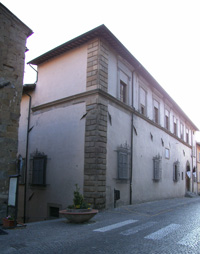
Casa di Piero della Francesca
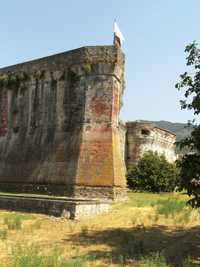 Medici Fortress Medici Fortress
|
| |
| |
|
|
|
|
|
| |
|
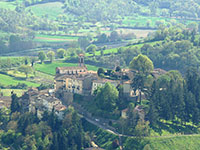 |
|
 |
|
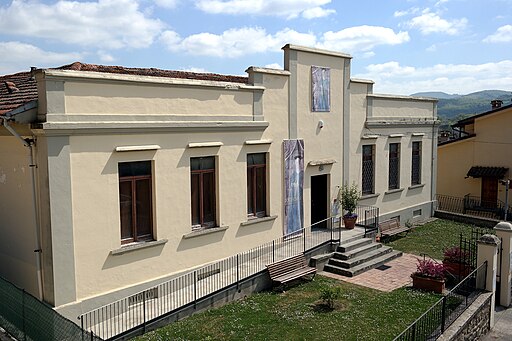 |
Monterchi
|
|
Cappella di Santa Maria di Momentana |
|
Monterchi - Museo della Madonna del parto |

[0] Sansepolcro church steeple - Tuscany, Italy, Flickr photographer: Christina J. Weis
[1] Marilyn Aronberg Lavin, Piero della Francesca 2002:14.
[2] Sansepolcro escaped artillery fire during World War 2 because Antony Clarke, the British captain charged with the task, had read the aforementioned essay by Aldous Huxley which described The Resurrection as "the greatest painting in the world". Captain Clarke had never seen the painting but at the last moment (shelling had already begun) remembered where he had heard of Sansepolcro and ordered his men to stop. A message received later informed them that the Germans had already retreated from the area — the bombardment hadn't been necessary. The town, along with its famous painting, survived.
Butcher, Tim (24 December 2011). "The man who saved The Resurrection". BBC News. Retrieved 24 February 2012.
BBBC News - The man who saved The Resurrection | www.bbc.co.uk/news/magazine-16306893
[3] Marco Bussagli, Piero Della Francesca, p. 24, Giunti Editore, 2007
References
Montenegro, Riccardo (May 2007). "Un'arte per tutte le stagioni". Medioevo (124): pp. 34–35.
Roberto Manescalchi, Appunti concernenti la fortuna storica del polittico della Madonna della Misericordia di Piero della Francesca. Heliopolis (in collaborazione con Sergio Pittino)1980
Madonna della Misericordia (Piero della Francesca)
|
| |
|
|
|
|
| |
|
|
|
|

Walking in Tuscany | In the footsteps of Piero della Francesca, from Sansepolcro to Monterchi
|

Piero della Francesca e le corti italiane | Piero della Francesca and the Italian Courts
Museo Statale d’Arte Medievale e Moderna
Arezzo, Via S. Lorentino 8 | www.mostrapierodellafrancesca.it
31st March – 22nd July 2007 | Press releases
Exhibition Itinerary
Art in Tuscany | Giorgio Vasari's Lives of the Artists | Piero della Francesca
Art in Tuscany | Madonna della Misericordia | Madonna of Mercy
Guido Botticelli | Il restauro del San Lodovico di Piero della Francesca | L'intervento conservativo sul S.Lodovico di Piero della Francesca
In the footsteps of Piero della Francesca | Piero della Francesca, an itinerary in Tuscany and central Italy
Film in Tuscany | Arezzo, Sansepolcro and Monterchi, the homeland of Piero della Francesca
|
| |

Hidden secrets in Tuscany | Holiday house Podere Santa Pia
|
| |
|
|
|
|
|
Podere Santa Pia, garden |
|
Podere Santa Pia |
|
Abbadia d’Ombrone and Monastero d’Ombrone near Castelnuovo Berardenga. |
| |
|
|
|
|
| Anghiari |
|
|
|
|
Anghiari is one of the most beautiful villages in Italy. On 29 June 1440, the plain in front of Anghiari was the scene of a famous battle, which went down in history as the Battle of Anghiari, between the Florentine allies of the Holy See on the one hand, and the Milanese on the other Few people were killed, but the victory in Tuscany resulted in the reduction of territorial ambitions in Lombardy. Leonardo da Vinci, at the request of the Florentine government, immortalized this event, painting this historic battle in the Palazzo Vecchio in Florence. Unfortunately, only a few copies remain today, including a Rubens, now preserved at the Louvre Museum in Paris. Anghiari, in addition to the beautiful churches, also has important museums: The Palazzo della Battaglia, or the Museum of Memory and the Landscape in the Land of Anghiari, and the State Museum of Palazzo Taglieschi. The Museum of the Battle of Anghiari, offers the opportunity to learn about the history of the battle and the artistic heritage of Leonardo to this place. The Taglieschi Museum, houses important artistic works of great historical value, frescoes from churches and palaces of the region, a wooden polychrome Madonna by Jacopo della Quercia, and Robbia pottery.
Anghiari has received the Italian Orange Flag award for sustainable tourism.
|
|
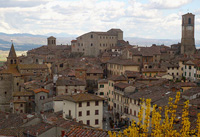
Anghiari |
| Le Opere di Piero della Francesca | Itinerario Sansepolcro Monterchi Arezzo
The exhibition extends and becomes an itinerary throughout the territory, allowing visitors to discover Piero's works in the Bacci Chapel in the Church of San Francesco in Arezzo, in the Dome of Arezzo, in the Museum Madonna del Parto in Monterchi and in the Civic Museum in Sansepolcro.
Sansepolcro
* Polyptych of Mercy, Civic Museum
* Resurrection, Civic Museum
* San Giuliano, Civic Museum
* San Ludovico, Civic Museum
Monterchi
* Madonna del Parto [the Pregnant Virgin Mary], Museum Madonna del Parto
The medieval hamlet stands in a location that was considered sacred by the Romans, and where the cult of Hercules used to be worshipped.
Visitors interested in Piero della Francesca’s art cannot but stop in this small town, placed between two small valleys (Val Padonchia and Val Cerfone), surrounded by holm-oak-covered hills. Piero della Francesca’s mother was born here, as witnessed by the small museum dedicated to her figure (right in the centre of the town), which also contains the famous fresco Madonna del Parto, an extraordinary portrait of the pregnant Virgin Mary.
Museo Madonna del Parto | Madonna del Parto
Painted in just seven days, the fresco represents one of the highest examples of Piero’s art.
Madonna del Parto is a masterpiece of figurative and chromatic synthesis, of equilibrium, formal essentialism, measure and extreme emotional depth. It is the image of a profound dignity, in which the Virgin’s body is moulded by solid geometries.
Arezzo
* Legend of the True Cross, Bacci Chapel, Basilica of San Francesco
* Santa Maria Maddalena, Dome
Arezzo stands on a hill in eastern Tuscany, just behind the Apennines between Tuscany and Romagna. The architecture of its centre is evidence of the town’s ancient origins: it was one of the main centres of the Etruscans and a strategic city in Roman times. The highest part of the town is typically medieval, dominated by the Cathedral and the Medici’s Fortress. The Gothic Cathedral has valuable works of art, including Magdalene by Piero della Francesca and precious glass windows decorated with historical scenes by Guillaume de Marcillat. Right in the centre of the town, the Piazza Grande encompasses a wide range of architectural styles. Besides the medieval towers, there stands the majestic Loggiato Vasariano - one of the most interesting architectural works of the Renaissance -, the Palazzo della Fraternita dei Laici - a fine example of both gothic and renaissance style -, and the apse of the Parish Church of Santa Maria. On the third Saturday of June and on the first Sunday of September, Piazza Grande becomes the setting for the Giostra del Saracino, a medieval tournament. On the first Sunday of each month and on the previous Saturday, an important Antiques’ Fair is held in the piazza and in many areas of the historical centre. The Bacci Chapel in the Basilica of San Francesco is splendidly decorated with the extraordinary cycle of frescoes of the Legend of the True Cross by Piero della Francesca, one of the finest examples of Italian Renaissance painting. In the simple one-nave Basilica of San Domenico, visitors can admire the Cross painted by Cimabue, one of his early works. With their beauty and architectural originality, many other churches and palaces pay tribute to Arezzo’s culture and importance throughout history, including the Abbey of Sante Flora and Lucilla, the Church of Santissima Annunziata, Palazzo Pretorio and Palazzo dei Priori and, just a couple of minutes away from the city walls, the Church of Santa Maria delle Grazie, and the Romanesque Parish Church of Sant’Eugenia al Bagnoro. The city museums - the Archaeological Museum Gaio Cilnio Mecenate, the State Museum of Medieval and Modern Art, Vasari’s Museum and House, the House & Museum Ivan Bruschi - allow visitors to admire extremely valuable works.
Legend of the True Cross
The cycle of frescoes in the choir of the Basilica of San Francesco is unanimously considered to be Piero della Francesca’s masterpiece. It was restored in the first half of the 1990s thanks to the fundamental contribution of Banca Etruria [www.pierodellafrancesca.it]; its 12 scenes can thus now be fully admired in all their gripping theatricality. The cycle represents a form of humanity oriented towards its icon in its earthly and human perfection, and in which the legend, reduced to basic, assumes an epical resonance.
The theme of the cycle of the True Cross had been used
by Agnolo Gaddi, a few decades before, in the Franciscan
church of Santa Croce in Florence. One of its sources
was a hagiographic compilation from the 13th century
called the The Golden Legend, by Jacopo da Varagine.
The frescos are placed on three levels on the back and
side walls. On the back wall two key scenes are shown.
On the left is The Annunciation, which was the first act
in the human events of the life of Christ. On the right is
Constantine's Dream, from which began the historical events to rediscover the True Cross, which then became I
the victory Standard of the Christian monarchs. The other
painted scenes represent episodes taken from the Old
Testament and the events leading to the Finding of the
True Cross by the Empress Helena. Piero della Francesca
did not follow the chronological order of the events when
he was designing the cycle but, instead he developed a
symmetry between the various scenes painted; on the
top level open air scenes were shown, in the middle
court scenes and on the bottom level were battle scenes.
The main episodes depicted are:
1 Death of Adam; Seth meeting the Archangel Michael
2 The Adoration of the Holy Wood; the Queen of Sheba kneels in front of the wood from which the cross will be made and meets King Solomon
3 The burial of the Sacred Wood
4 The Annunciation to Mary
5 The Vision of Constantine
6 The Victory of Constantine (Constantine's victory over Maxentius at the battle of Milvian Bridge)
7 The Torture of Judas the Jew
8 The Discovery and Proof of the True Cross
9 The Battle of Heraclius and Chosroes
10 The Exaltation of the Cross
11 The Prophet Jeremiah
12 The Prophet Isaiah
13 An angel
Dome | Santa Maria Maddalena
Solidly painted through a polished and pure colour geometry, the Magdalene, marked by traditional iconographic elements, effuses a serious and solemn sense of sacredness.
Itinerario
Visitors are invited to discover Piero della Francesca’s works in the province of Arezzo, by following an itinerary going through Valtiberina, Sansepolcro, Monterchi - the native hamlet of Piero’s mother Monna Romana - and Arezzo.
The Upper Valley of the Tevere river, or Valtiberina, is on the far east of Tuscany, and takes its name after the river that runs across it up to the border with Umbria. In the past, Valtiberina represented both the border and meeting point between different civilizations, the Umbri and the Etruscans, the Bizantines and the Longobardi. Piero della Francesca, in Borgo San Sepocro itself, was able to perceive the secrets of space and light, reflecting them into his works.
The Civic Museum of Sansepolcro, the artist’s native town, holds four works, the Polyptych of Mercy, the Resurrection, San Giuliano and San Ludovico.
After visiting Sansepolcro, the itinerary continues in Monterchi, in Val Cerfone. In Monterchi, which stands on the top of a hill on the border with Umbria, Piero della Francesca painted the extraordinary fresco of Madonna del Parto, in the old church of Santa Maria a Momentana.
The itinerary continues and ends in Arezzo. A splendid town standing on a hill in eastern Tuscany, just behind the Apennines between Tuscany and Romagna, Arezzo used to be one of the most important Etruscan cities and later became a strategic centre for the Romans. Here, Piero della Francesca painted one of the most important masterpieces of the Renaissance. The Bacci Chapel in the Basilica of San Francesco contains Piero della Francesca’s frescoed cycle of the Legend of the True Cross, painted for the Franciscan church between 1452 and 1466. The Dome of Arezzo displays the fresco Magdalene (at the bottom of the left nave).
Piero della Francesca in and around Arezzo | Download pdf
[Source: www.mostrapierodellafrancesca.it]
|
|
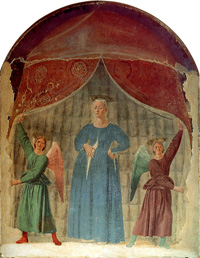
Madonna del Parto [the Pregnant Virgin Mary], Museum Madonna del Parto
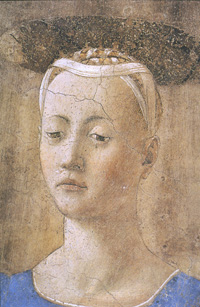 Piero della Francesca, Madonna del parto (dettaglio) Piero della Francesca, Madonna del parto (dettaglio)
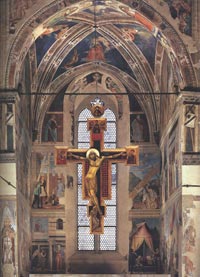 Legend of the True Cross, Bacci Chapel, Basilica of San Francesco Legend of the True Cross, Bacci Chapel, Basilica of San Francesco
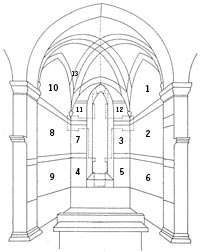
Narrative sequence
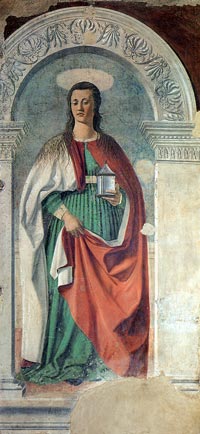 Santa Maria Maddalena, Dome, Arezzo Santa Maria Maddalena, Dome, Arezzo
|
|
|
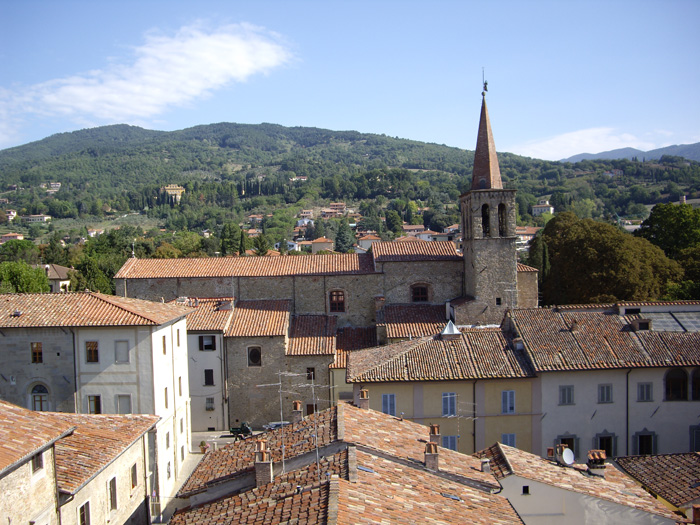
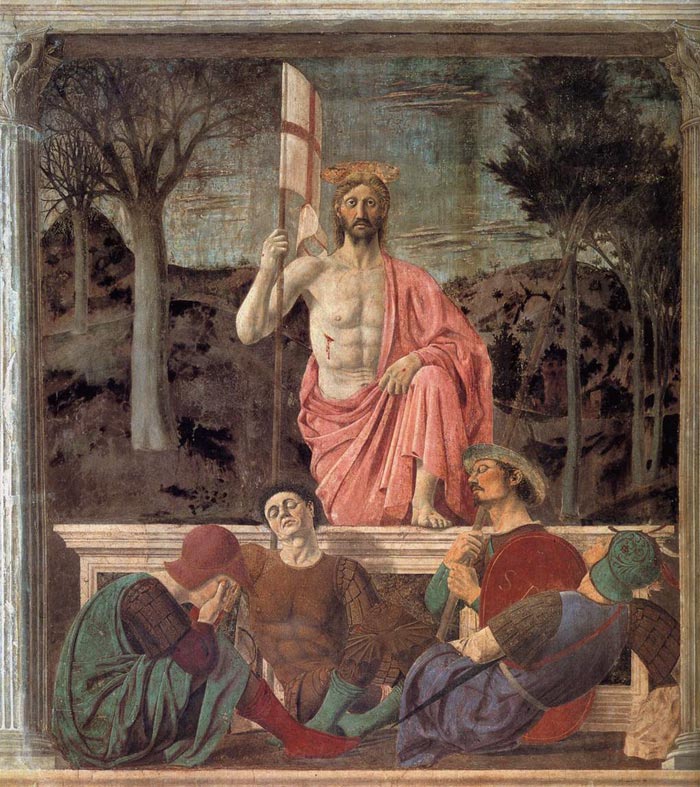

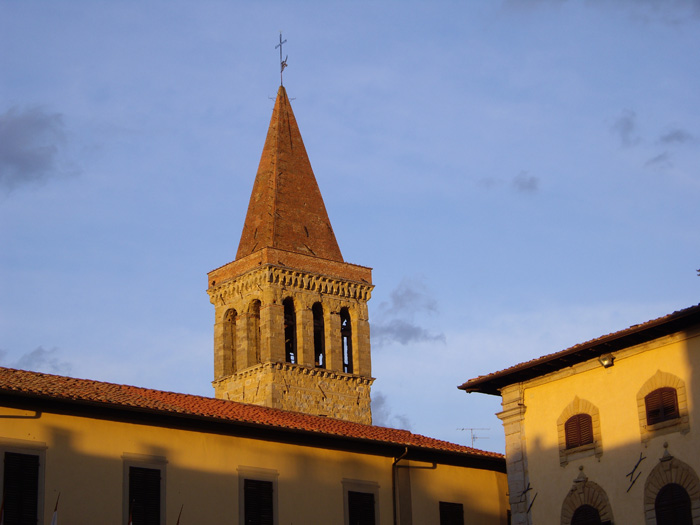

 Raffaellino del Colle, Resurrection
Raffaellino del Colle, Resurrection


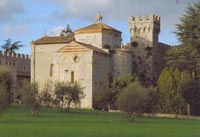

 Piero della Francesca, The Resurrection
Piero della Francesca, The Resurrection 



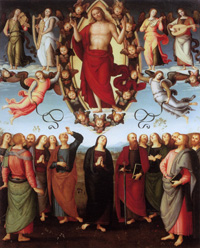








 Piero della Francesca, Madonna del parto (dettaglio)
Piero della Francesca, Madonna del parto (dettaglio)

